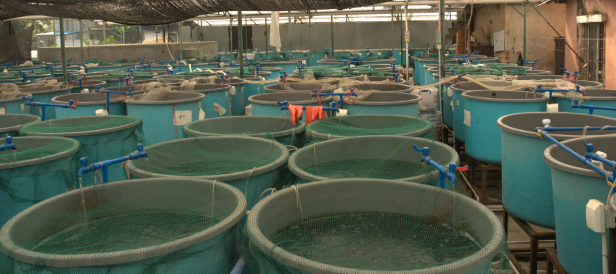
Worldwide, the voracious appetite for fish has shamefully depleted our oceans, overexploited stocks, and destroyed marine habitats. To keep pace with the growing demand for seafood—predicted to rise 8% during the next decade—the world must increasingly rely on aquaculture, the farming of fish.
As stewards of a future without food scarcity and environmental plunder, our critical challenge is to find new ways to produce more fish without causing more harm. Forward-thinking fish farmers, other entrepreneurs, and scientists are already working on exemplary systems and practices to raise fish without negative impacts. Yet, scaling these efforts to a level that can meet growing demand for seafood requires overcoming significant financial, political, social, and logistical challenges. That conundrum, however, can also represent a significant business opportunity.
“The aquaculture revolution, the blue revolution, has not always been green. We have to make the blue revolution greener. We need a turquoise revolution!”
University of New Brunswick
Using that lens of potential opportunity, Future of Fish used a discovery framework to analyze the “stuck points” in the systems supporting innovations that reduce the environmental impact of fish farming or make progress in furthering the economic viability of eco-friendlier aquaculture techniques. Our analyses led us ultimately to a set of five opportunity areas for further exploration that could potentially shift the aquaculture industry landscape toward less environmental impact, greater efficiency, lower risk, reduced costs, and increased scalability.
Opportunity 1
Opportunity 2
Opportunity 3
Opportunity 4
Opportunity 5




